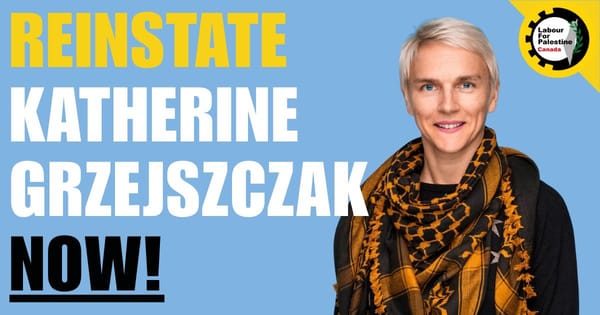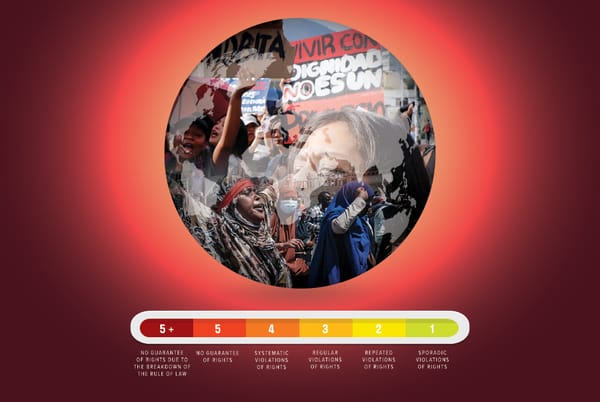
The average wage of a Canadian worker is taking a hit right now. But so far, I haven’t seen much analysis that draws together the various causes behind this problem. A relatively robust jobs recovery and moderately low unemployment should translate into wage growth, but they aren’t. What gives?
To start, wage growth has been highly uneven over the lifecycle of COVID-19. At the beginning of the pandemic, average wages shot up. Much like union density (see below), this was a reflection of low wage workers losing their jobs in greater numbers than higher wage earners, who were also more likely to be able to work from home. The “composition of the sample” was skewing the data. Now that jobs have mostly recovered (though not without significant gender disparity), we seem to be back to “normal” when it comes to wage growth trends.
From December 2020 to December 2021, permanent employees saw a 3.3 per cent average weekly wage increase (trailing those in temporary employment, who saw a 6.2 per cent wage increase). However, when we include data going back to December 2019, permanent employees saw a total of 8.6 per cent average weekly wage growth. To a certain extent, this reflects employers raising wages to attract workers back into the labour market, though this process has been more anecdotal than universal.
Across industries and occupations, some workers have seen wage growth in line with inflation, while others have been left behind. Workers in arts and culture have experienced above average wage gains, while those in management positions have mostly kept pace with workers in traditional employment relationships. Sales and service occupations have also tracked average weekly wage growth, though wages in many of these occupations remain comparatively low.
In other sectors, wage growth has been anemic. The average weekly wages of health care workers have grown by only 0.7 per cent this past year (4.8 per cent in two years), while workers in manufacturing and utilities have managed on a miserly 2 per cent wage increase between December 2019 and December 2021.
Tellingly, over the course of the pandemic, wages have risen faster for non-union members than for union members. Between December 2019 and December 2021, non-union workers saw their average weekly wages grow by 10.3 per cent, slightly above the rate of inflation. However, union members saw only 5 per cent wage growth over this two-year period. In 2021, union members managed only a 1.7 per cent average weekly wage increase.
In 2017, union members were earning an average weekly wage roughly 17 per cent higher than their non-union counterparts. Last year, this figure had dropped to just over 13 per cent. The comparable figures for average hourly wages similarly declined, from 17.8 per cent in 2017 to 13.8 per cent in 2021. This is in line with the longer term trend of a falling “union wage premium,” i.e. the greater pay one earns as a result of union membership.
Meanwhile, since March 2021, inflation has risen above the Bank of Canada’s 2 per cent midpoint target and now sits at 5.1 per cent. It now seems likely that inflation will outstrip average wages, and is presently doing so for many workers. Businesses that plan to raise wages in response to the “labour shortage” likely won’t do so at rates high enough to match inflation or improve average wages.
For many, wage stagnation is the order of the day.
Wage stagnation is hardly a new phenomenon, of course. The trend of rising real (i.e., inflation-adjusted) average wages ended in the mid-1970s, after the imposition of wage and price controls to break inflation along with the power of organized labour. Since that time, the story has been wage stagnation for much of the Canadian working class, with the real average wage having about as much purchasing power as it did 40 years ago.
Similar concerns over inflation today — particularly its negative consequences for workers’ wages — opens the prospect of policy solutions that would do more harm than good. Yes, inflation is currently outstripping many workers’ wages, which amounts to an effective pay cut. However, the standard central bank solution — raising interest rates — would only harm workers further.
Raising rates to suck demand out of the economy will drive up unemployment and depress workers’ wages demands. The Bank of Canada has for now kicked the can down the road on an interest rate hike, but has indicated that an increase is in the offing. This is in spite of the Bank’s new, albeit weak, commitment to “keep one eye on the jobs picture,” as CBC news wrote, when making monetary decisions (far short of the “dual mandate” for which many were hoping). Similar calls for an interest rate hike are being made in the United Kingdom, with less fanfare about the implications for the working class.
There’s no evidence, then, that wage pressure is driving inflation. Indeed, several factors have combined to contain wage growth across the country.
According to conventional economic wisdom, a tighter labour market with low unemployment should translate into rising wages. Yet, on average, this hasn’t been the dynamic.
There’s some evidence of wage and salary growth among workers in certain higher income sectors. Further, what has been termed “the great resignation” in the United States, or the “voluntary turnover” in Canada, has hit a seven-year high for 2020-21, at 9.1 per cent. In other words, there are some workers exercising individual autonomy and switching jobs in search of better wages, or quitting because of burnout, as in health and long-term care. This has exacerbated the so-called “labour shortage” in certain sectors of the economy, such as retail and hospitality, manufacturing, and health care, but it hasn’t had any appreciable impact on average wages.
It’s important to keep in mind that average wage growth is measuring an average. Those workers able to capitalize on a tight labour market and move into better paying jobs pocketed wage gains. Many others are simply stuck in place and experiencing inflation-adjusted wage losses. The likely temporary growth in “voluntary turnover” doesn’t change the overall picture, which shows large segments of the Canadian working class experiencing an effective wage cut.
Public Sector Union Repression
Frequently left out of the story of recent wage dynamics is the role of public sector workers and their collective bargaining rights. Just more than 19 per cent of the Canadian labour force works in the public sector, and many of the unions who represent them face significant restrictions on their rights to bargain and strike, which is driving down wage growth.
Governments across the country have passed provincial legislation to strip unions of meaningful collective bargaining rights and suppress public sector wages. In Ontario, the Progressive Conservatives passed Bill 124 in 2019, which caps wage increases for nurses, teachers and many other public sector workers at 1 per cent annually. Police and firefighters are exempted. Furthermore, the legislation directs labour boards to hand down arbitration decisions in line with the wage restraint legislation. A 1 per cent wage increase is all that the Ontario Nurses’ Association received in arbitration in June 2020, for example.
Manitoba’s Bill 28, the Public Services Sustainability Act, attempted to restrict the collective bargaining rights of 120,000 public sector employees in that province. The Act passed in 2017 and imposed a two-year wage freeze, followed by another two years of 0.75 and 1 per cent wage increases. The Manitoba Federation of Labour and a coalition of unions successfully challenged the legislation in court, but later lost on appeal.
Although new Premier, Heather Stefanson, repealed Bill 28 and it wasn’t proclaimed into law, the provincial government has nevertheless pressured public sector employers to limit wage increases during bargaining. For example, the University of Manitoba Faculty Association struck the University of Manitoba in November 2021 after negotiations broke down. During bargaining, the province pressured the university not to grant wage increases proposed by the faculty association.
In Alberta, Premier Jason Kenney’s United Conservative Party passed Bill 32, the Restoring Balance in Alberta’s Workplace Act, which introduced a host of new labour repressions into perhaps the most anti-union jurisdiction in the country. Most notably, Bill 32 partially inserted “right-to-work” provisions into Alberta’s labour relations system. The bill distinguished between “core” (bargaining and representation) and “non-core” (political lobbying, donations to charities and nonprofits, and ill-defined “general social causes and issues”) union activities. The legislation sets “opting out” as the default, meaning that union members must actively choose to pay dues for “non-core” union activities.
Regulations following the bill, which come into effect this year, will extend what constitutes a “non-core” union activity to encompass anything that doesn’t benefit a dues payer directly in the workplace. This will further limit how dues can be collected and when they can be remitted to parent unions or labour centrals. These new rules are deliberately designed to weaken the labour movement in Alberta and Canada by making it difficult to pool union resources for the purpose of political action and public policy campaigning, that indirectly, aid in winning wage gains and other progressive measures.
More than 120,000 federal public service employees are currently in bargaining with the Government of Canada, facing the twin pressures of heightened inflation and calls from right-wing politicians and many bank economists to impose austerity and contain federal public sector wage growth. The federal government is the largest employer in the country, so how these negotiations turn out will have a big impact on wages trends in the public sector and beyond.
“Labour Is Not A Commodity”
Labour is unlike other commodities, it seems. Rather than a reflection of the “law” of supply and demand, labour’s price is the outcome of power relations, and the institutions and regulations through which those relations play out. Workers get what they can collectively demand, and bosses give up what they must, in order to keep production humming along. How the economic pie gets divided isn’t the outcome of market forces but rather a result of the balance of class forces.
Prior to the pandemic, for example, unemployment was historically quite low, yet this wasn’t translating into noticeable wage gains. Without the collective power of the labour movement, workers in general don’t realize the potential wage gains that should ostensibly result from their stronger individual bargaining positions in a tight labour market.
However, there’s also been very little to indicate that a tighter labour market has contributed to the kinds of collective action necessary to improve the wages and conditions of the working class as a whole in Canada. Union density ticked upward slightly during the height of the pandemic, but only because more non-union workers lost their jobs than unionized workers — hardly anything to celebrate.
As jobs recovered, union density has returned to its “normal” level, at around 31 per cent. Small victories aside — such as the unionization of Chapters Indigo workers at several stores — we haven’t seen the types of organizing breakthroughs that would be necessary to drive up density and strengthen workers’ collective bargaining power. This is despite the fact that unions are very popular. Strike activity is also still at very low levels; a tighter labour market hasn’t translated into greater willingness to withdraw labour. Repressive wage restraint and back-to-work legislation directed at public sector unions on top of all this certainly doesn’t help.
If workers are to make meaningful wage gains, the issues of public sector restraint and low private sector union density will need to be addressed. Workers need the collective power of strong unions to gain a bigger share of the economic pie.







